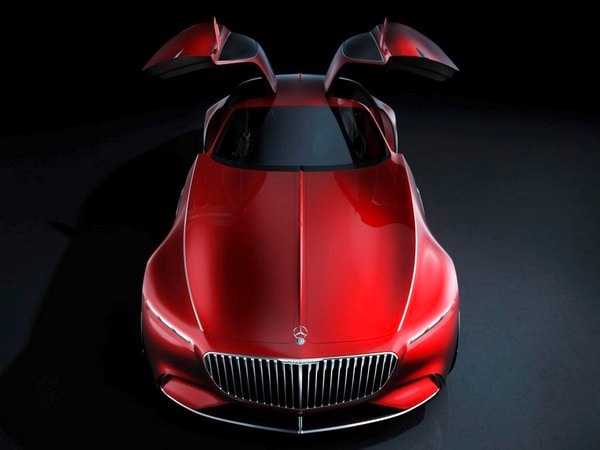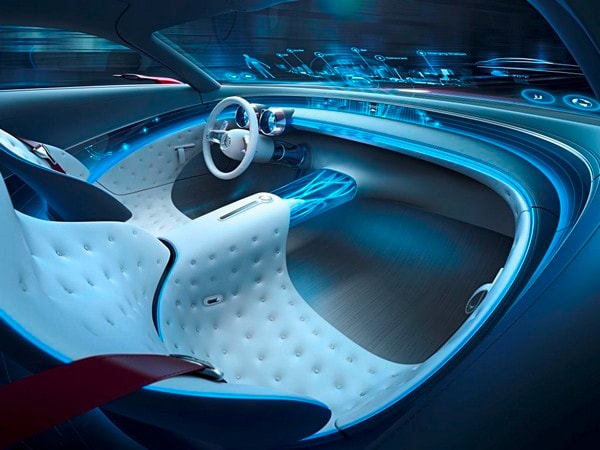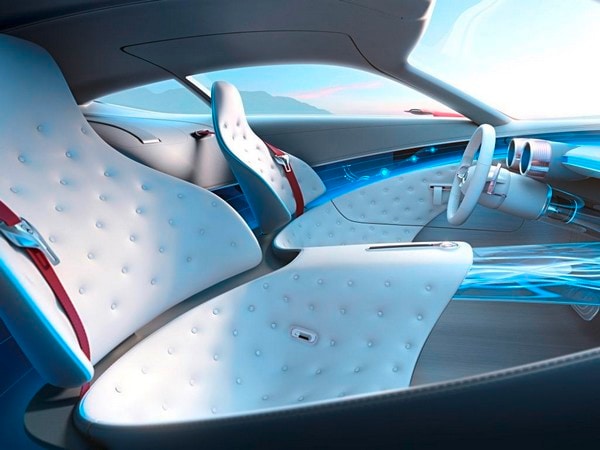As a cutting edge technology leader, Mercedes has a corporate vision of the future, which has been displayed in a series of Vision concept cars dating to 2012. The Maybach 6 is the latest. Unveiled at Pebble Beach, California, home of the prestigious Pebble Beach Concours d’Elegance—the crowning event in Monterey’s annual tribute to the automobile—the Maybach 6 concept is a cornucopia of future technology that could appear in Mercedes passenger cars in the not-too-distant future.
The same can be said of the car’s styling elements, although these are likely to be more restrained for showroom models. Like any dream car, the Maybach 6 concept isn’t limited by production realities.
Basics: the Vision Mercedes-Maybach 6 is a supersize coupe, the first two-door in the Vision series, with a long hood capable of sheltering a V-16 engine, a fast windshield, and even faster rear roofline culminating in a boat-tail rear end.
Although the front end’s waterfall grille is vertical, the rest of the shape flows like it was drawn from a taffy puller. Access to the 2+2 cabin is via gullwing doors, and the rear is further distinguished by a narrow split-window backlight (think 1963 Corvette Stingray coupe). Striking may be too tame a word for the Vision’s dramatic profile.
Sci-Fi cabin
The inner Vision borders on sci-fi. The inner windshield provides a full-width head-up display that provides geographic information as well as data related to driving. The display includes gesture control.
Leather seats contain sensors that track vital signs of occupants, and can adjust temperature and other functions accordingly. The sensors also monitor ambient light and ambient temperature, as well as the color of occupant clothing, and can adjust “emotional lighting effects” accordingly.
And most striking of all is a center drive tunnel is transparent, and displays the function of the electric drive system.
This is a luxury car, of course, so there are more traditional interior elements—traditional wood trim, lots of top grain leather, and other examples of what Mercedes characterizes as “authentic materials.” A novel touch under that heading is the elm flooring, which creates a “refined yachting look,” according to the design team.
Electrifying Performance
Propulsion isn’t quite as exotic as other elements of the car, but it is far from everyday. A quartet of permanent magnet synchronous electric motors, one inside each of the 24-inch wheels, combine to produce 738 horsepower, according to Mercedes—about 185 horsepower per wheel.
The Pebble Beach presentation made no mention of torque, the real strong suit of electric motors, but Mercedes claims the de facto 4-wheel drive system is capable of propelling the concept car to 100 kilometers per hour (62 mph) in less than four seconds. Top speed is electronically limited at 155 mph.
Mercedes didn’t furnish a curb weight, but given the coupe’s substantial dimensions—224.4 inches long (about 10 inches longer than the massive Mercedes Maybach S600 sedan), 82.7 inches wide, 52.4 inches tall—and power system, mass is undoubtedly formidable. Dimensions add up at the scales, regardless of materials, and electric cars run heavy, thanks to their motors and battery packs.
Details concerning the type of battery pack were not available. Mercedes cites a usable capacity of 80 kilowatt hours and a potential maximum range between charges of 200 miles. The concept also includes a quick-charge system under development capable of giving the battery pack 100 kilometers (62 miles) of range in five minutes. In addition, it boasts an electromagnetic wireless charging system, as well as conventional cable charging connections
Daimler AG design chief Gordon Wagener says the latest Vision concept “represents the ultimate in contemporary luxury. It is hot and cool.”














